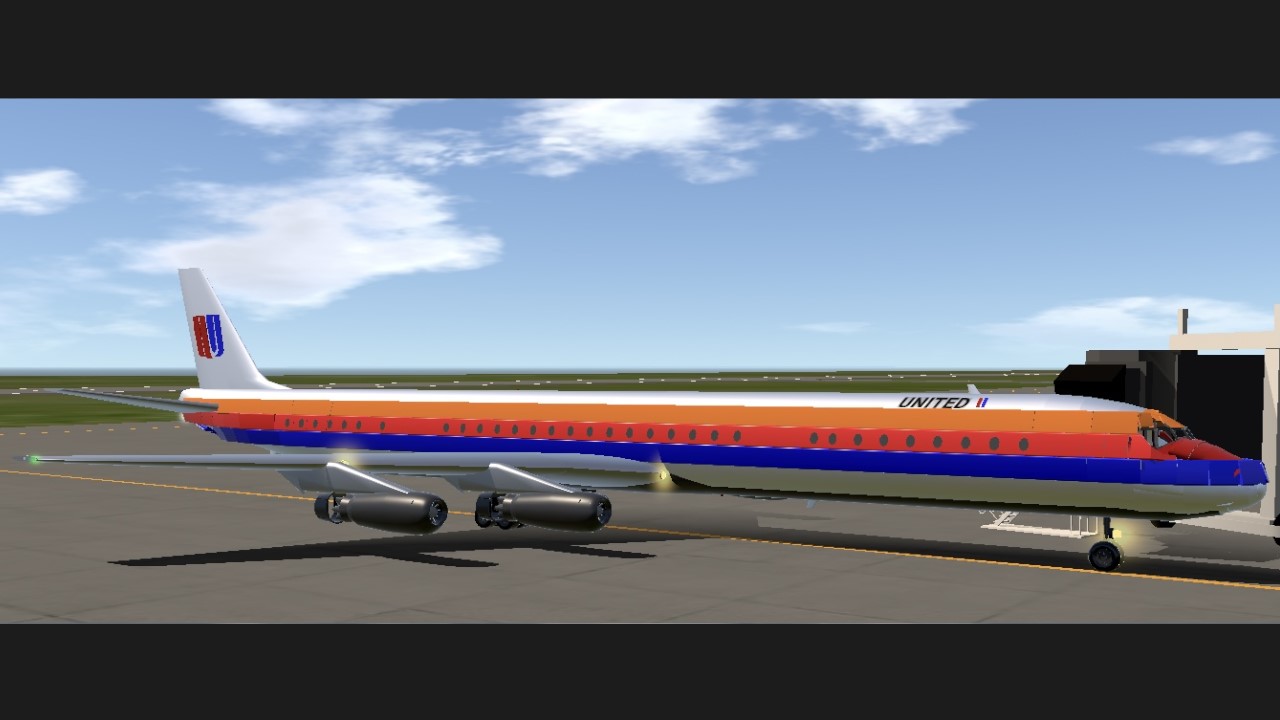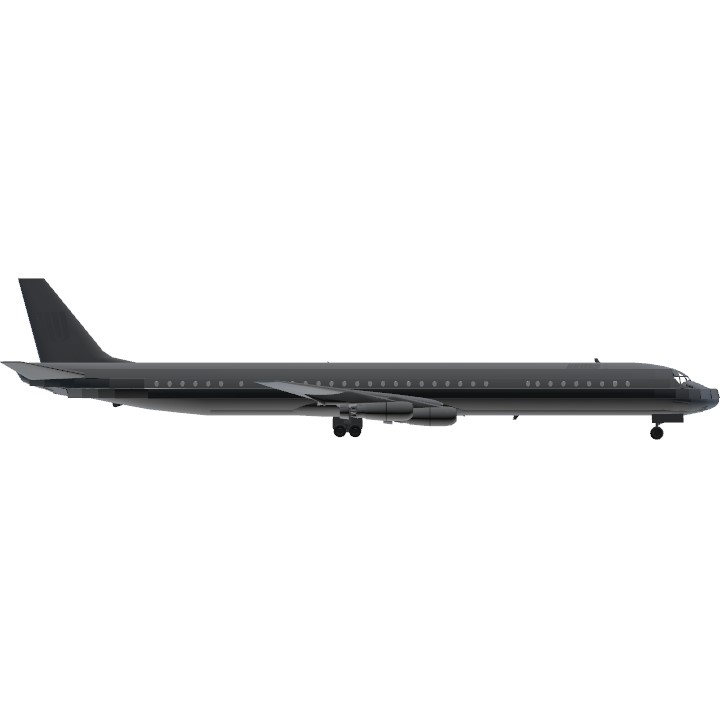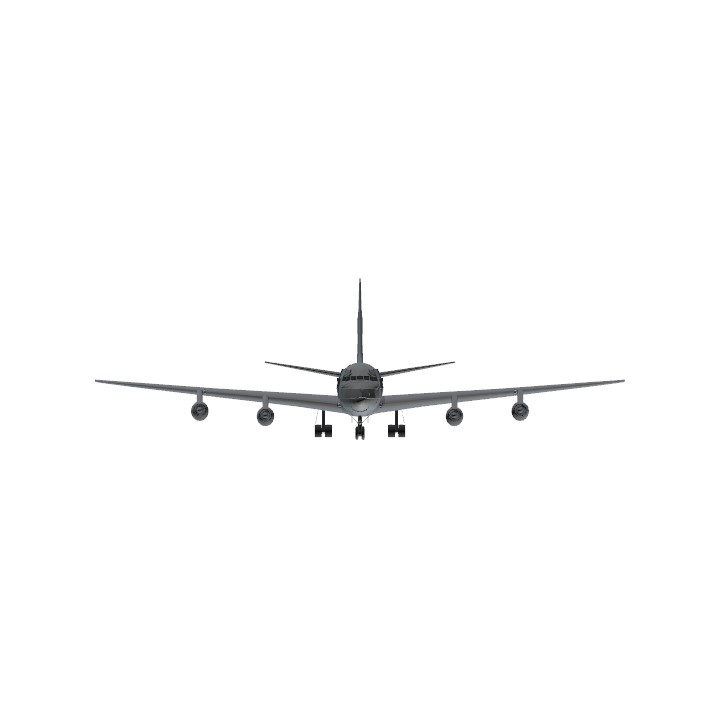Credits:
Fuselage: Annedzsrue's DC-8-61
Engines (replaced them to make the plane look more realistic): Annedzrue's DC-8-32
—————————————————————————————
WHAT WIKIPEDIA HAS TO SAY ‘BOUT FLIGHT 173:
Flight 173 was piloted by an experienced cockpit crew, consisting of Captain Malburn "Buddy" McBroom (age 52), First Officer Roderick "Rod" Beebe (45), and Flight Engineer Forrest "Frosty" Mendenhall (41). McBroom had been with United Airlines for 27 years; he was one of the airline's most senior pilots with more than 27,600 hours of flight time, of which about 5,500 hours had been as a DC-8 captain. Beebe had been with the airline for 13 years and had logged more than 5,200 flight hours. Mendenhall had close to 3,900 flight hours and had been with the airline for 11 years. The first officer and flight engineer had over 2,500 hours of flying experience between them in the DC-8.
Flight 173 departed from Denver's Stapleton International Airport at 15:47 MST with 189 people on board, eight crew and 181 passengers. The estimated flight time was 2 hours and 26 minutes, and the planned arrival time in Portland was 17:13 PST, about 40 minutes after sunset. According to the automatic flight plan and monitoring system, the total amount of fuel required for the flight to Portland was 31,900 lb (14,500 kg). About 46,700 lb (21,200 kg) of fuel were on board the aircraft when it departed the gate in Denver.
As the landing gear was being lowered on approach to Portland International Airport, the crew felt an abnormal vibration and yaw of the aircraft and a lack of an indicator light showing the gear was lowered successfully. The crew requested a holding pattern to diagnose the problem, and for about the next hour, the crew flew over southeast Portland and worked to identify the status of the landing gear and prepare for a potential emergency landing. During this time, none of the three cockpit flight crew effectively monitored the fuel levels, which was exacerbated by the fact that the gear was down with the flaps at 15° during the entire hour-long holding maneuver, significantly increasing fuel burn rate. As a result, the number 3 and 4 engines flamed out.
As the crew prepared for a final approach for an emergency landing on runway 28L, they lost the number one and number two engines to a flameout, at which point a mayday was declared. This was the last radio transmission from Flight 173 to air traffic control; it crashed into a wooded section of a populated area of suburban Portland, about six nautical miles (11 km; 7 mi) southeast of the airport.
Of the crew members, two were killed, flight engineer Mendenhall and lead flight attendant Joan Wheeler; two sustained injuries classified by the National Transportation Safety Board (NTSB) as "serious", and four sustained injuries classified as "minor/none". Eight passengers died, and 21 had serious injuries.
The 304th Aerospace Rescue and Recovery Squadron of the Air Force Reserve, based at Portland International Airport, was conducting routine training flights in the area that evening. Airborne aircraft from this unit (HH-1H Huey helicopters) were immediately diverted to the crash scene and proceeded to transport many of the survivors to local hospitals.
Source=Wikipedia
R.I.P to all that died on board.
——————————————————————————————
CONTROLS
AG1=Engines
AG2=Reverse
AG4=Emergency Slides
AG5=Autopilot/Arcade mode
I guess you can figure out the lights yourself.
Specifications
Spotlights
- PinnicaleAirlines3701 2.3 years ago
General Characteristics
- Predecessor DC-8-71 Delta
- Successors 1 airplane(s) +28 bonus
- Created On iOS
- Wingspan 143.3ft (43.7m)
- Length 194.8ft (59.4m)
- Height 44.2ft (13.5m)
- Empty Weight 179,756lbs (81,536kg)
- Loaded Weight 216,656lbs (98,273kg)
Performance
- Power/Weight Ratio 1.219
- Wing Loading 63.5lbs/ft2 (309.9kg/m2)
- Wing Area 3,413.1ft2 (317.1m2)
- Drag Points 24398
Parts
- Number of Parts 842
- Control Surfaces 9
- Performance Cost 4,081





Very nice . I love to see Alitalia Dc8 please in the 80's livery. Thank you